python tutorial - Python interview questions pdf - learn python - python programming
python interview questions :171
Dictionary of types?
- Since type names don't have to be unique across modules, you must use the type (classObject) itself.
- Luckily, types will automatically have a non-trivial hash value:
>>> class A(object): pass
>>> class B(object): pass
>>> hash(A)
2579460
>>> hash(B)
2579600
click below button to copy the code. By Python tutorial team
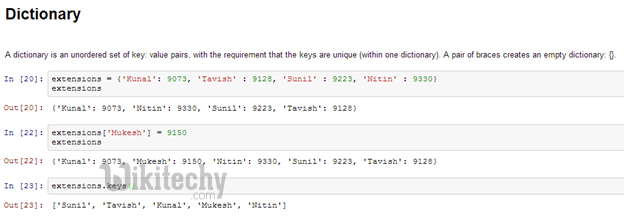
Learn python - python tutorial - python-dictionary - python examples - python programs
python interview questions :172
What is the purpose of the `//` operator in python?
x=10
y=2
print x/y
print x//y
Both output 5 as the value.
click below button to copy the code. By Python tutorial team
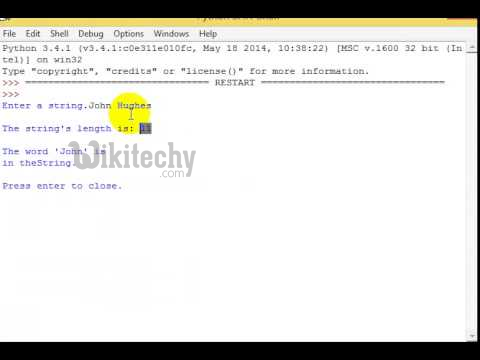
Learn python - python tutorial - operator-in-python - python examples - python programs
Integer division vs. float division:
>>> 5.0/3
3: 1.6666666666666667
>>> 5.0//3
4: 1.0
click below button to copy the code. By Python tutorial team
python interview questions :173
What Is The Command To Debug A Python Program?
- The following command helps run a Python program in debug mode.
$ python -m pdb python-script.py
click below button to copy the code. By Python tutorial team
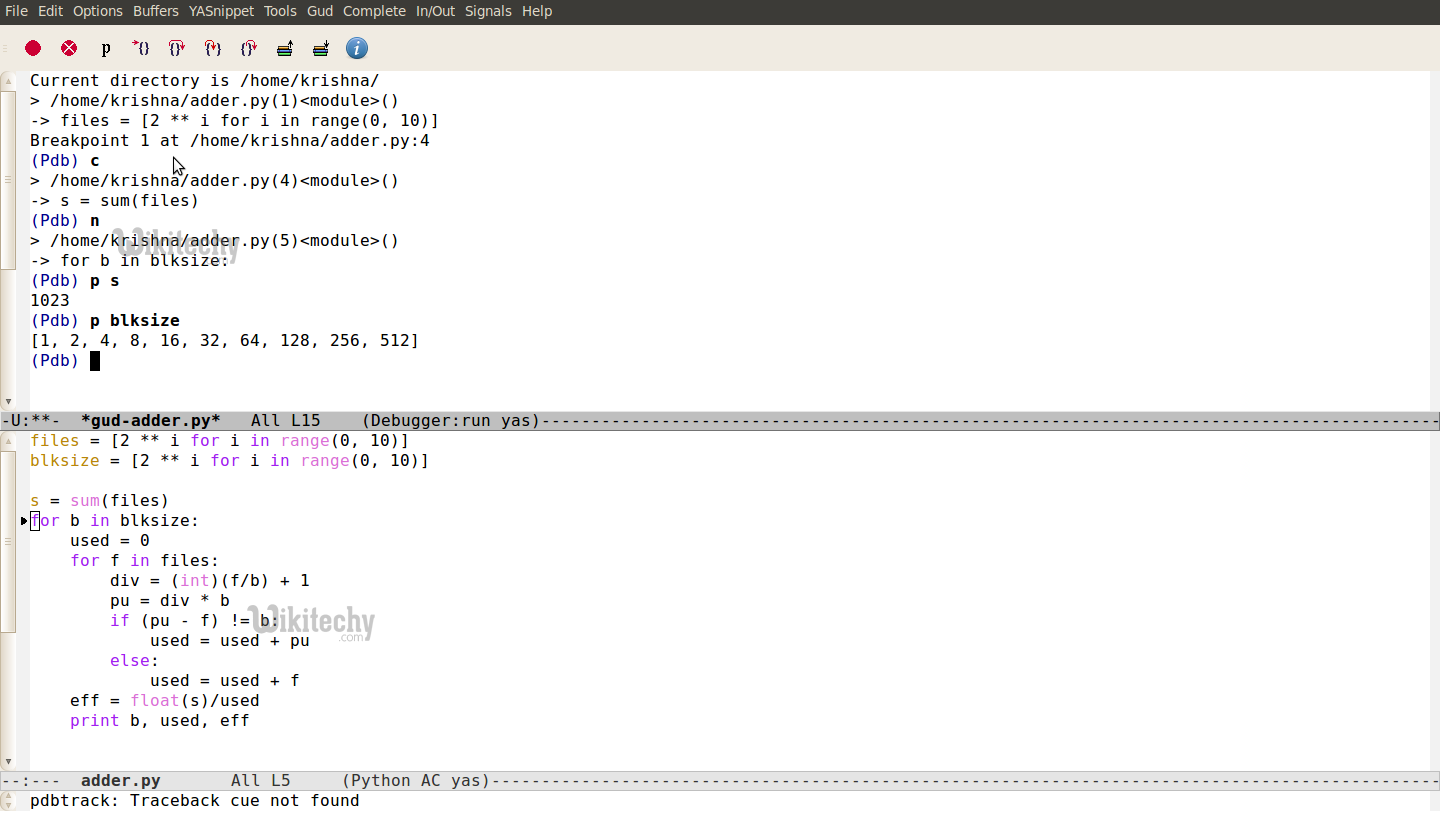
Learn python - python tutorial - command-to-debug-python-program - python examples - python programs
python interview questions :174
How Do You Monitor The Code Flow Of A Program In Python?
- In Python, we can use <sys> module’s <settrace()> method to setup trace hooks and monitor the functions inside a program.

Learn python - python tutorial - python-flow-chart - python examples - python programs
- You need to define a trace callback method and pass it to the <settrace()> method. The callback should specify three arguments as shown below.
import sys
def trace_calls(frame, event, arg):
# The 'call' event occurs before a function gets executed.
if event != 'call':
return
# Next, inspect the frame data and print information.
print 'Function name=%s, line num=%s' % (frame.f_code.co_name, frame.f_lineno)
return
def demo2():
print 'in demo2()'
def demo1():
print 'in demo1()'
demo2()
sys.settrace(trace_calls)
demo1()
click below button to copy the code. By Python tutorial team
python interview questions :175
Why And When Do You Use Generators In Python?
- A generator in Python is a function which returns an iterable object. We can iterate on the generator object using the <yield> keyword. But we can only do that once because their values don’t persist in memory, they get the values on the fly.
- Generators give us the ability to hold the execution of a function or a step as long as we want to keep it. However, here are a few examples where it is beneficial to use generators.
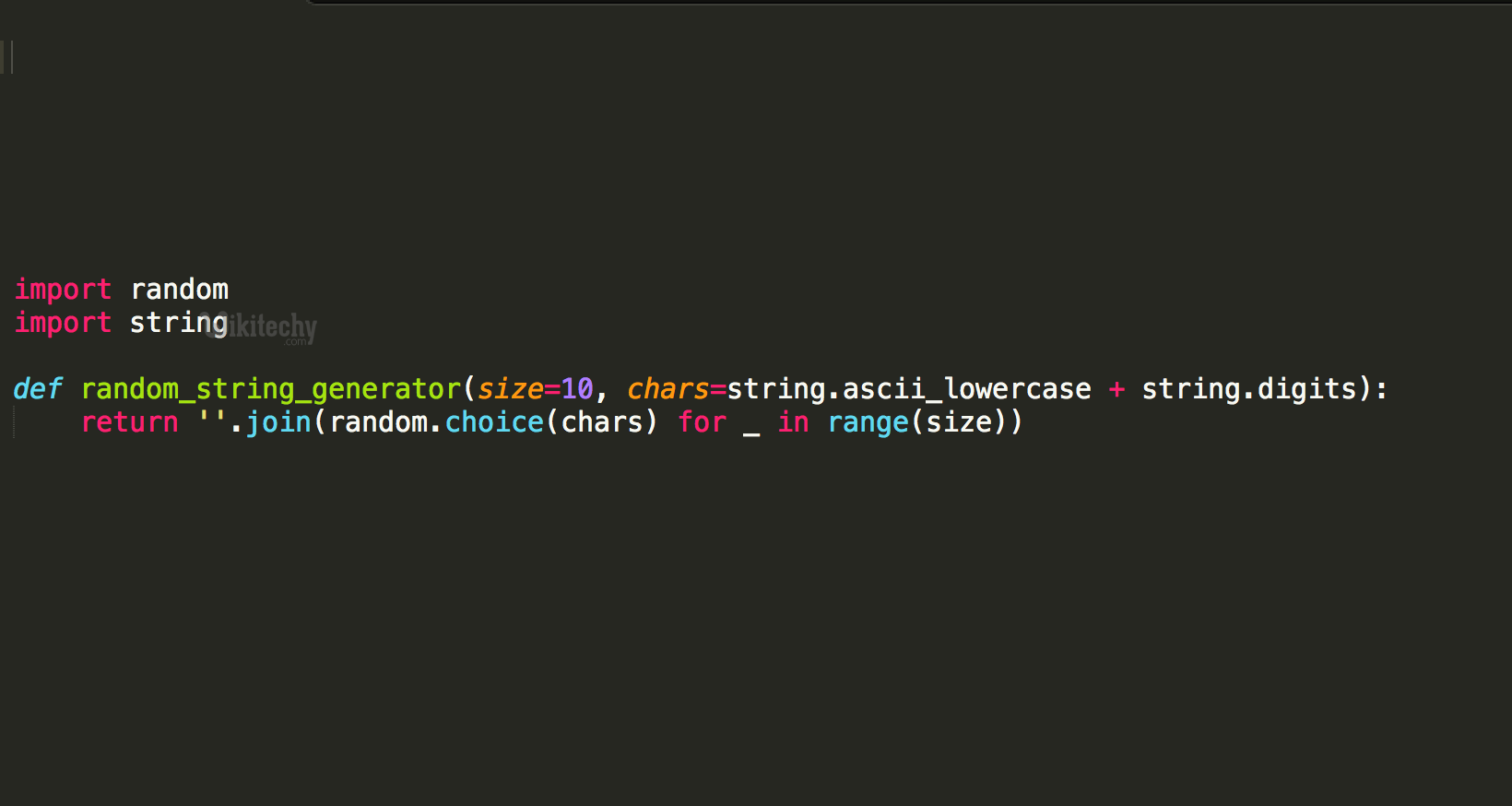
Learn python - python tutorial - generators-in-python - python examples - python programs
- We can replace loops with generators for efficiently calculating results involving large data sets.
- Generators are useful when we don’t want all the results and wish to hold back for some time.
- Instead of using a callback function, we can replace it with a generator. We can write a loop inside the function doing the same thing as the callback and turns it into a generator.
python interview questions :176
What Does The <Yield> Keyword Do In Python?
- The <yield> keyword can turn any function into a generator. It works like a standard return keyword. But it’ll always return a generator object. Also, a function can have multiple calls to the <yield> keyword.
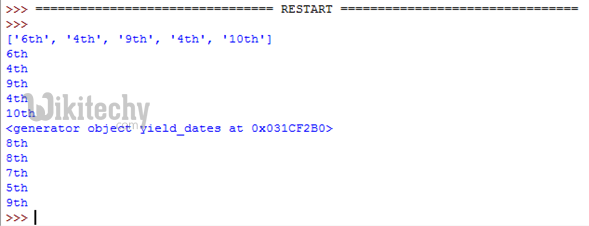
Learn python - python tutorial - yield-keyword-in-python - python examples - python programs
Example :
def testgen(index):
weekdays = ['sun','mon','tue','wed','thu','fri','sat']
yield weekdays[index]
yield weekdays[index+1]
day = testgen(0)
print next(day), next(day)
click below button to copy the code. By Python tutorial team
output:
sun mon
python interview questions :177
How To Convert A List Into Other Data Types?
- Sometimes, we don’t use lists as is. Instead, we have to convert them to other types.
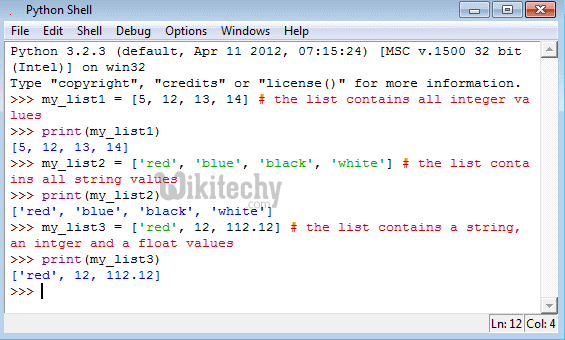
Learn python - python tutorial - python-shell - python examples - python programs
Turn A List Into A String.
- We can use the <”.join()> method which combines all elements into one and returns as a string.
weekdays = ['sun','mon','tue','wed','thu','fri','sat']
listAsString = ' '.join(weekdays)
print(listAsString)
click below button to copy the code. By Python tutorial team
output:
sun mon tue wed thu fri sat
Turn A List Into A Tuple.
- Call Python’s <tuple()> function for converting a list into a tuple. This function takes the list as its argument. But remember, we can’t change the list after turning it into a tuple because it becomes immutable.
weekdays = ['sun','mon','tue','wed','thu','fri','sat']
listAsTuple = tuple(weekdays)
print(listAsTuple)
click below button to copy the code. By Python tutorial team
output:
('sun', 'mon', 'tue', 'wed', 'thu', 'fri', 'sat')
Turn A List Into A Set.
- Converting a list to a set poses two side-effects.
- Set doesn’t allow duplicate entries, so the conversion will remove any such item if found.
- A set is an ordered collection, so the order of list items would also change.
- However, we can use the <set()> function to convert a list to a set.
weekdays = ['sun','mon','tue','wed','thu','fri','sat','sun','tue']
listAsSet = set(weekdays)
print(listAsSet)
click below button to copy the code. By Python tutorial team
output:
set(['wed', 'sun', 'thu', 'tue', 'mon', 'fri', 'sat'])
Turn A List Into A Dictionary.
- In a dictionary, each item represents a key-value pair. So converting a list isn’t as straight forward as it were for other data types.
- However, we can achieve the conversion by breaking the list into a set of pairs and then call the <zip()> function to return them as tuples.
- Passing the tuples into the <dict()> function would finally turn them into a dictionary.
weekdays = ['sun','mon','tue','wed','thu','fri']
listAsDict = dict(zip(weekdays[0::2], weekdays[1::2]))
print(listAsDict)
click below button to copy the code. By Python tutorial team
output:
{'sun': 'mon', 'thu': 'fri', 'tue': 'wed'}
python interview questions :178
How Do You Count The Occurrences Of Each Item Present In The List Without Explicitly Mentioning Them?
- Unlike sets, lists can have items with same values. In Python, the list has a <count()> function which returns the occurrences of a particular item.
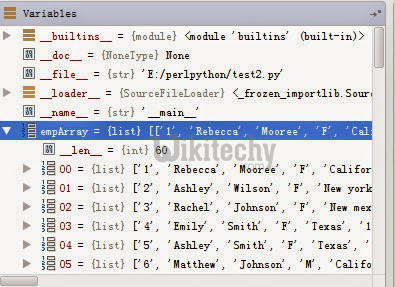
Learn python - python tutorial - python-variable - python examples - python programs
- Count The Occurrences Of An Individual Item.
weekdays = ['sun','mon','tue','wed','thu','fri','sun','mon','mon']
print(weekdays.count('mon'))
click below button to copy the code. By Python tutorial team
output:
3- Count The Occurrences Of Each Item In The List.
- We’ll use the list comprehension along with the <count()> method. It’ll print the frequency of each of the items.
weekdays = ['sun','mon','tue','wed','thu','fri','sun','mon','mon']
print([[x,weekdays.count(x)] for x in set(weekdays)])
click below button to copy the code. By Python tutorial team
output:
[['wed', 1], ['sun', 2], ['thu', 1], ['tue', 1], ['mon', 3], ['fri', 1]]
python interview questions :179
What Is NumPy And How Is It Better Than A List In Python?
- NumPy is a Python package for scientific computing which can deal with large data sizes. It includes a powerful N-dimensional array object and a set of advanced functions.
- Also, the NumPy arrays are superior to the built-in lists. There are a no. of reasons for this.
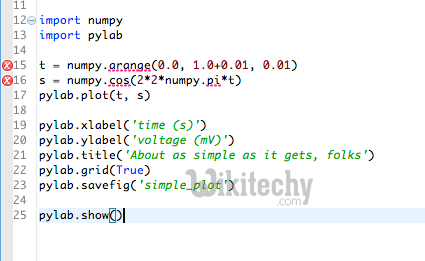
Learn python - python tutorial - nympy-python - python examples - python programs
- NumPy arrays are more compact than lists.
- Reading and writing items is faster with NumPy.
- Using NumPy is more convenient than to the standard list.
- NumPy arrays are more efficient as they augment the functionality of lists in Python.
python interview questions :180
What Are Different Ways To Create An Empty NumPy Array In Python?
- There are two methods which we can apply to create empty NumPy arrays.
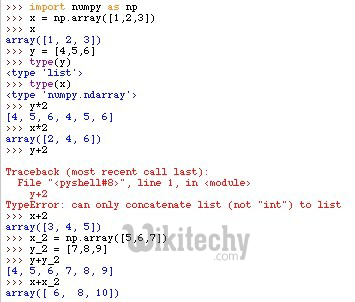
Learn python - python tutorial - nympy-array-in-python - python examples - python programs
- The First Method To Create An Empty Array.
import numpy
numpy.array([])
click below button to copy the code. By Python tutorial team
- The Second Method To Create An Empty Array.
# Make an empty NumPy array
numpy.empty(shape=(0,0))
